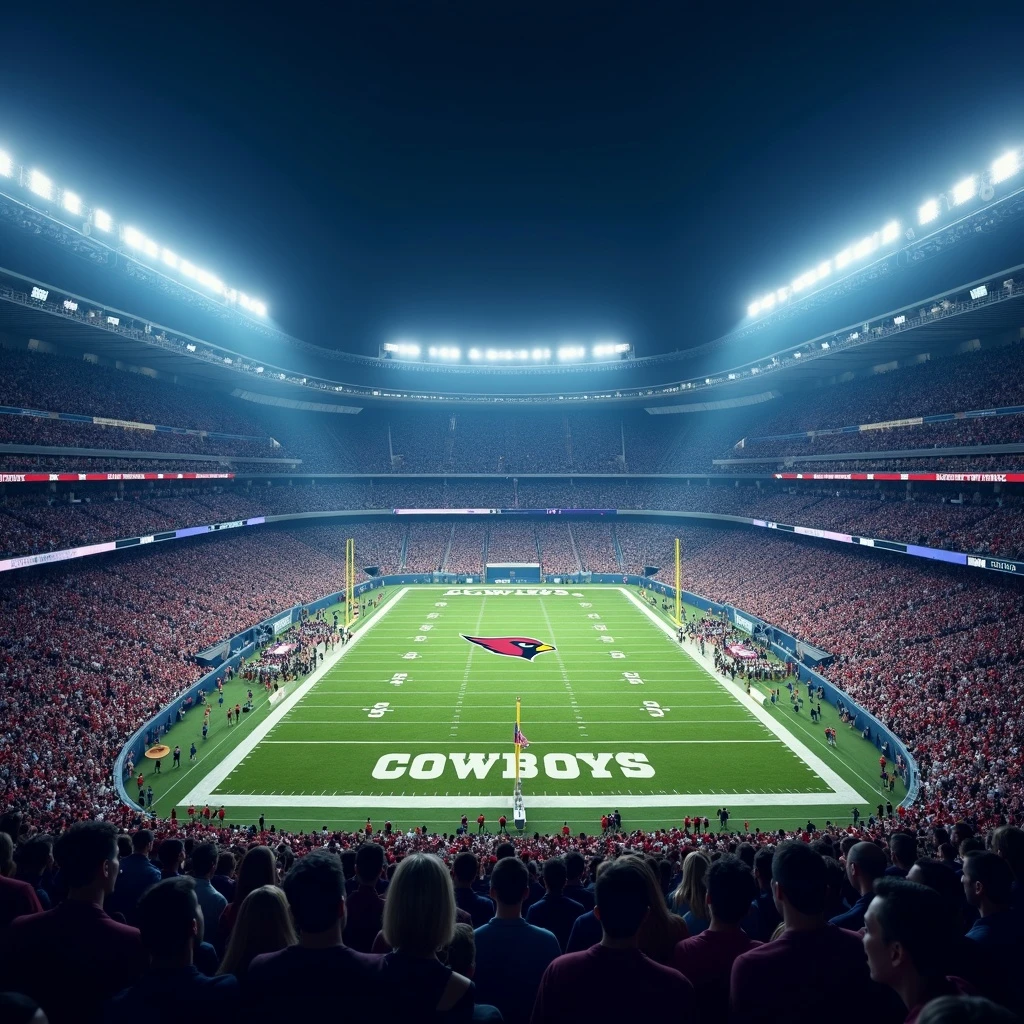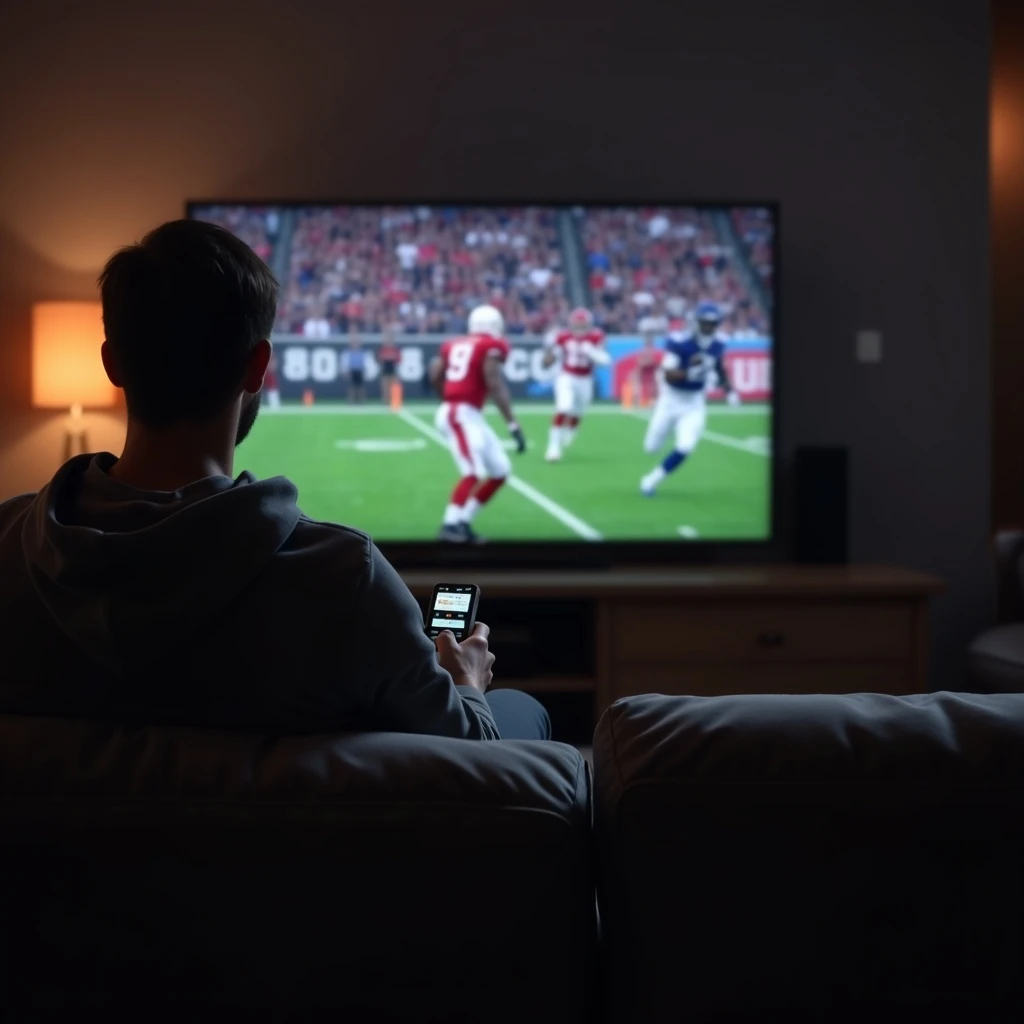The highly anticipated Monday Night Football clash between the Arizona Cardinals and Dallas Cowboys witnessed a viewership rollercoaster, with the absence of YouTube TV contributing to a significant year-over-year decline.
Want to know what people are really saying? Don’t miss the buzz from Reddit at the end!
Ratings Rollercoaster: Highs, Lows, and Blackouts
Picture this: millions of devoted Cowboys fans settling in for Monday Night Football, only to discover their game has disappeared into the digital void. That’s exactly what happened when YouTube TV’s corporate standoff with Disney stripped away access to ESPN and ABC for countless subscribers. The result? A staggering 21.4% audience drop that sent shockwaves through the sports broadcasting industry.
The Cardinals-Cowboys matchup managed to pull 16.2 million viewers across ESPN, ABC, ESPN2, ESPN Deportes, and NFL+—impressive by most standards, but a devastating blow when compared to the previous year’s Week 9 performance. This wasn’t just about missing one game; it exposed the hidden fragility of how Americans consume sports in the streaming age.
What makes this particularly fascinating is the timing. We’re witnessing a real-time experiment in viewer behavior during one of the most critical periods in television history. As traditional cable subscriptions continue their death spiral and streaming services battle for dominance, sports remain the last bastion keeping many viewers tethered to expensive pay-TV packages. But when those digital bridges burn, what happens to the audience?
The answer reveals something unsettling about our modern sports consumption habits. Despite the availability of workarounds—from sports bars to over-the-air antennas to alternative streaming methods—millions of fans simply couldn’t or wouldn’t adapt. They vanished from the ratings entirely, creating a viewing vacuum that even America’s Team couldn’t fill.

Inside the YouTube TV Blackout That Sports Executives Don’t Want You to Know About
Behind closed doors, network executives are having conversations they hoped they’d never need to have. The YouTube TV blackout didn’t just affect viewership numbers—it created a laboratory for understanding just how dependent modern sports broadcasting has become on streaming platforms that they don’t control.
YouTube TV boasts over 8 million subscribers, making it one of the largest streaming TV services in America. When Disney pulled its channels over a carriage dispute, it wasn’t just about monthly subscription fees—it was about access to some of the most valuable sports content on television. The timing couldn’t have been worse, coinciding with NFL prime time and the beginning of college basketball season.
What’s particularly revealing is how different demographics responded to the blackout. Tech-savvy viewers quickly found alternatives: some switched to Hulu + Live TV or other services, others dusted off their digital antennas to catch the ABC simulcast, and the most determined sought out streaming workarounds that exist in legal gray areas. But a significant portion—particularly older viewers who had finally made the leap from cable to streaming—found themselves stranded.
The networks know exactly what this cost them, though they’re being suspiciously quiet about the specifics. Industry insiders suggest the real damage extends beyond just one night’s ratings. When viewers are forced to find alternatives during a blackout, some discover they don’t actually need that expensive streaming package. Others find new platforms and never return. It’s a churn pattern that keeps streaming executives awake at night.
This blackout also revealed something networks didn’t want to acknowledge: their content is more portable than ever, but their audience loyalty isn’t guaranteed. The days when viewers would wait patiently for disputes to resolve are over. In the streaming age, there’s always another option—and sometimes that option is simply walking away from sports altogether.

Why the Cowboys Effect Couldn’t Save Monday Night Football This Time
For decades, the Dallas Cowboys have been the NFL’s secret weapon against declining ratings. Known as America’s Team, they consistently deliver audiences that other franchises can only dream of. Their drawing power is so reliable that networks actively lobby to feature them in prime time slots, knowing that even a mediocre Cowboys game will outperform most other matchups.
The numbers tell the story: just last year, a Cowboys-Bengals game pulled 18.7 million viewers despite both teams sporting losing records at the time. It was a masterclass in the Cowboys’ unique ability to transcend typical football metrics—when Dallas plays, America watches, regardless of playoff implications or team performance.
So when this year’s Cowboys-Cardinals matchup, with actual playoff stakes on the line, could only muster 16.2 million viewers, alarm bells started ringing in network boardrooms. This wasn’t just about seasonal viewership fluctuations or changing viewer habits—this was about the YouTube TV blackout breaking one of television’s most reliable formulas.
The implications extend far beyond one Monday night. If the Cowboys can’t overcome distribution problems, what does that say about the rest of the NFL’s drawing power? Industry analysts are quietly questioning whether the era of appointment television—even for the most beloved teams—is truly coming to an end.
What’s perhaps most concerning for broadcasters is that this represents ESPN’s second-highest Week 9 audience since 2011, yet it still fell dramatically short of expectations. In previous years, the Monday Night Football game wasn’t simultaneously broadcast on ABC, meaning the cross-platform strategy that networks hoped would maximize viewership couldn’t compensate for the streaming audience they lost.
The Cowboys’ star power has always been about more than football—it’s been about cultural relevance, national conversation, and the shared experience of watching together. But when significant portions of the audience can’t access the game, even the most magnetic team in sports loses its gravitational pull. The YouTube TV blackout proved that in the fragmented media landscape of 2024, distribution trumps even the most powerful content.

The Missing Data That Could Change Everything About Sports Broadcasting
There’s a crucial piece of information that ESPN and Disney are keeping suspiciously close to their chest: the breakdown between viewers who watched on ABC versus those who tuned in through cable and streaming platforms. This seemingly technical detail could hold the key to understanding the future of sports broadcasting in America.
Here’s why this matters: ABC is available free over-the-air to anyone with a basic antenna. If a significant portion of the 16.2 million viewers watched through this traditional method rather than paid services, it would suggest that Americans are quietly abandoning expensive pay-TV packages in favor of free alternatives. This shift would represent a seismic change in how networks monetize sports content.
The refusal to provide this breakdown isn’t accidental. Networks have spent billions securing sports rights under the assumption that they can command premium subscription fees and advertising rates. If viewers are increasingly accessing games through free over-the-air signals, it undermines the entire economic model that justifies those massive investments.
Industry watchers are parsing every available clue. The fact that ESPN promoted the ABC simulcast heavily during the YouTube TV blackout suggests they were actively trying to retain displaced viewers through the free alternative. But whether this was a temporary emergency measure or a glimpse into a cord-cutting future remains unclear.
The timing of this data blackout is particularly suspicious given the broader trends in television consumption. Antenna sales have surged as streaming costs continue to rise, and younger viewers are increasingly comfortable mixing free over-the-air content with selective streaming subscriptions. If Monday Night Football viewers are leading this charge, it could force a complete rethinking of sports broadcasting economics.
With the Packers-Eagles game approaching in just five days, the pressure is mounting for either a resolution to the YouTube TV dispute or additional data that might clarify viewing patterns. But the longer networks remain silent about the ABC versus cable breakdown, the more it seems like they’re hiding something they don’t want advertisers and league officials to see.
The missing data isn’t just about one night’s ratings—it’s about whether the traditional sports broadcasting model can survive in an era where viewers have more choices and less patience for corporate standoffs. If significant numbers of fans successfully switched to free alternatives during the blackout, it might prove that the pay-TV model for sports is more vulnerable than anyone in the industry wants to admit.

Internet Reactions to the Cardinals vs Cowboys Ratings Rollercoaster
The absence of YouTube TV from the equation left many subscribers scrambling to find alternative ways to watch the game, with some viewers expressing their frustration with Disney and ESPN. The viewership numbers raise questions about the impact of carriage disputes and the evolving landscape of television consumption, with industry analysts suggesting that advertisers may be increasingly unhappy with the declining audience.